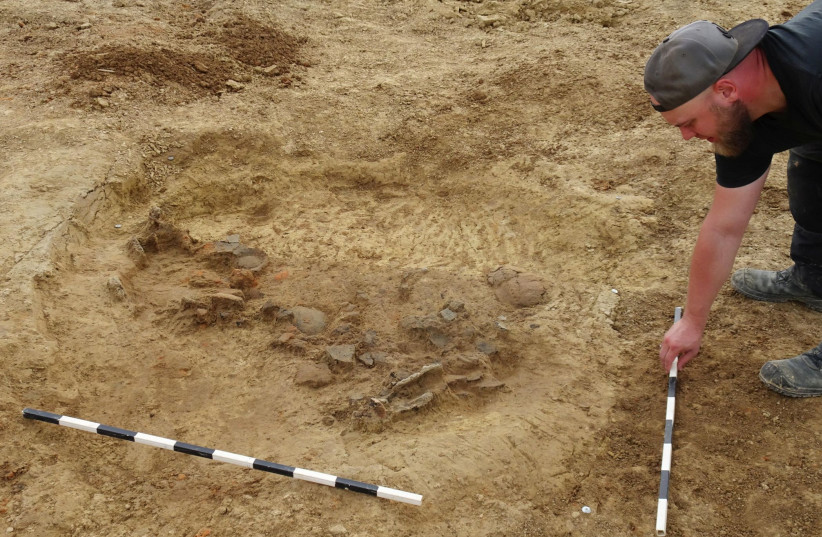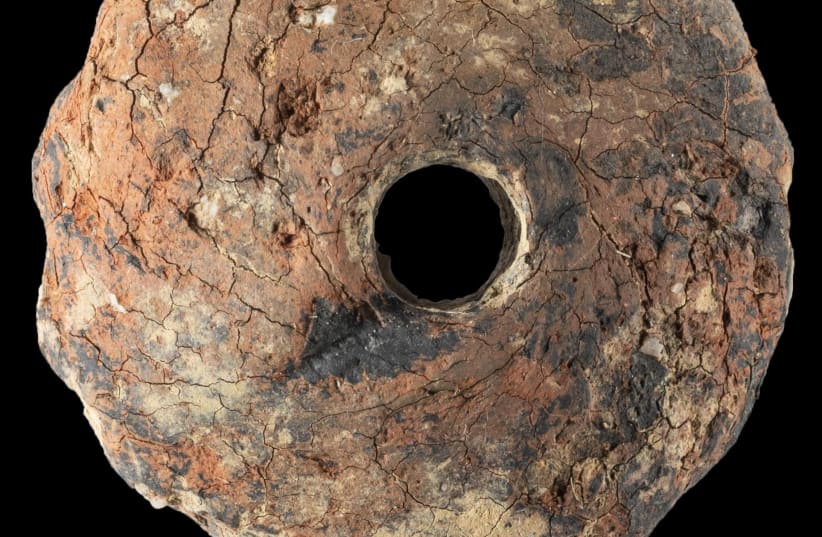A 2,000-year-old burial site containing charred remains and valuable artifacts has been unearthed near Fröndenberg-Frömern, Germany. Led by the Westphalia-Lippe Regional Association (LWL), experts have uncovered a captivating glimpse into the Iron Age's mysteries, shedding light on the rich history of the region.
Dr. Manuel Zeiler, an archaeologist with LWL, expressed his excitement about the discovery, stating, "The rich ceramic addition makes one grave in particular unique for the Iron Age in Westphalia." This remarkable find promises to enrich our understanding of the historical context of the era.
The excavation was undertaken as part of ongoing monitoring of clay mining activities in the area. A local family business from Fröndenberg/Ruhr is responsible for extracting raw materials from small parcels of land, subsequently processed as components for substrate mixtures used in plant cultivation. This process necessitates the removal of topsoil, followed by its restoration once the clay extraction is complete, allowing the land to return to agricultural use.

Uncovering historical significance
The region surrounding Fröndenberg has long been recognized as a rich settlement landscape, thanks in large part to the dedicated efforts of volunteer archaeological monument conservator Michael Becker, whose decades of work have been instrumental in uncovering its historical significance. Recent clay mining operations near Frömern have already provided insights into the Iron Age history of the area, but this year's findings have surpassed expectations.
Dr. Eva Cichy from LWL Archeology's Olpe branch explained, "In addition to smaller post pits, some excavations also appeared directly beneath the arable land, which were quite easy to recognize, especially due to the large amount of fire debris, charcoal, and larger ceramic shards." The presence of human remains in some of these excavations quickly led to the realization that a small burial ground had been unearthed, though much of it had been damaged over time by agricultural activities.
Of particular note are two larger pits, both containing significant quantities of fire debris and large ceramic fragments. The northernmost pit, slightly oval in shape and approximately 15 centimeters deep, stood out. Numerous oversized ceramic shards with intriguing features, such as finger impressions and applied tone bars, were discovered at its edge. Dr. Manuel Zeiler pointed out, "We know of such ceramics, for example, from well-dated settlements in Lower Hesse from the 3rd to 2nd centuries BC." The presence of burnt bones in this pit indicates that it served as a grave, specifically a burn pit grave where only limited quantities of the funeral pyre's remains were placed. Additional artifacts, including a decorated spindle whorl and several loom weights, hint at the possibility that this could have been the burial site of a woman.
Furthermore, a complete, winged and stalked arrowhead made of flint, dating back approximately 2,000 years to the Bell Beaker culture at the end of the Neolithic Age, was found in one of the neighboring pits. While its presence is remarkable, archaeologists are uncertain whether it was intentionally placed there during the Iron Age or coincidentally ended up in the pit during excavation or backfilling. It remains a tantalizing mystery.
Prof. Dr. Michael Baales, the head of the LWL Olpe branch, emphasized the significance of consistent archaeological monitoring in regions conducive to settlement. He stated, "The example in Frömern shows how important consistent archaeological monitoring of earthworks is in such regions that are favorable for settlement. Many scientifically important, further insights can always be gained here." This discovery underscores the importance of ongoing research in unearthing the secrets of our ancient past.
